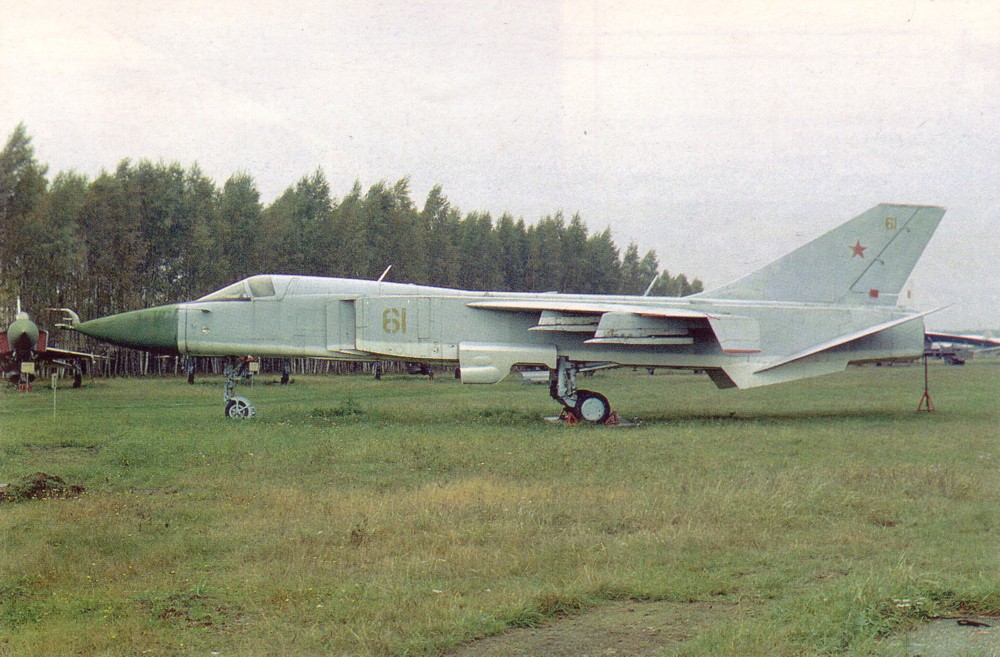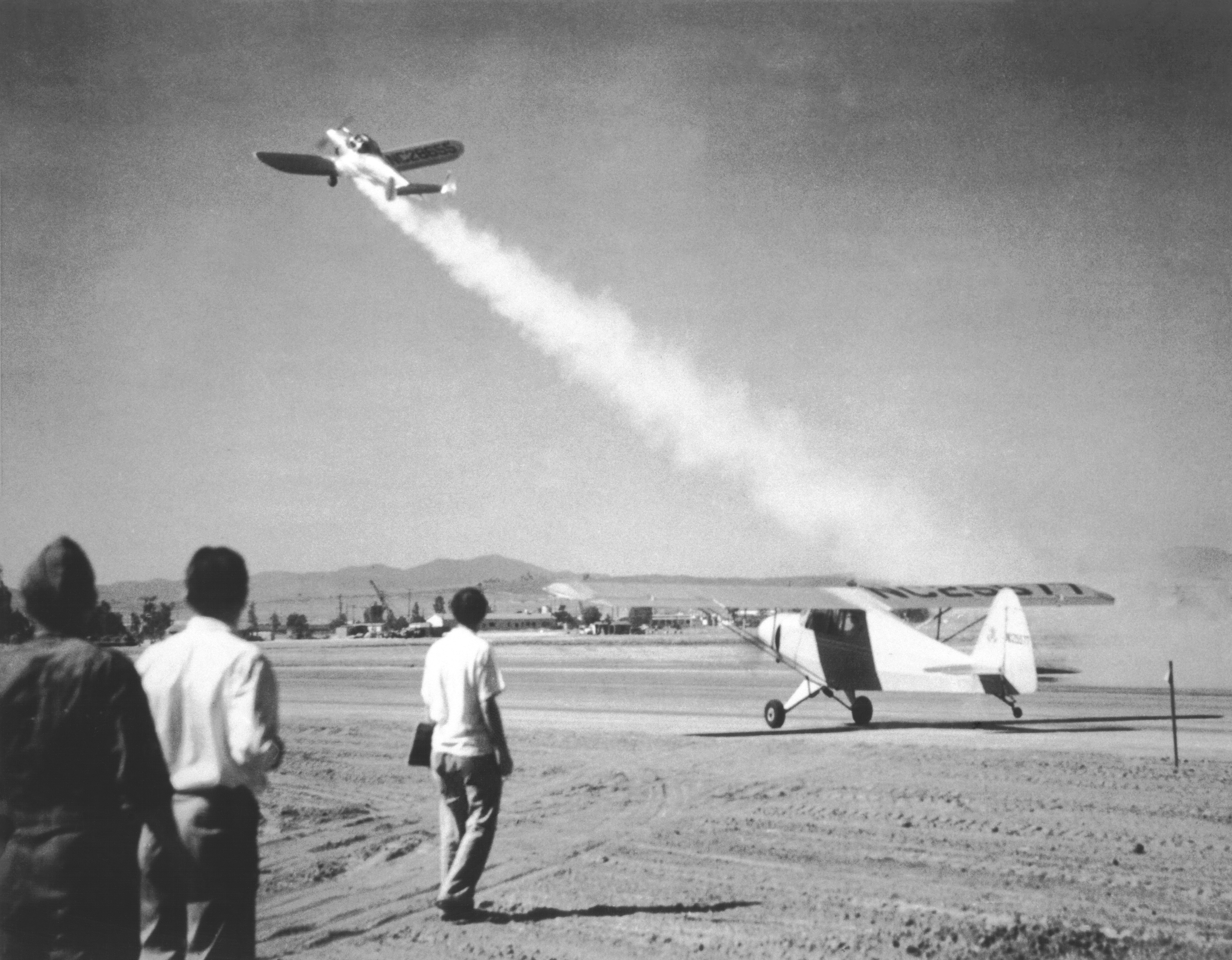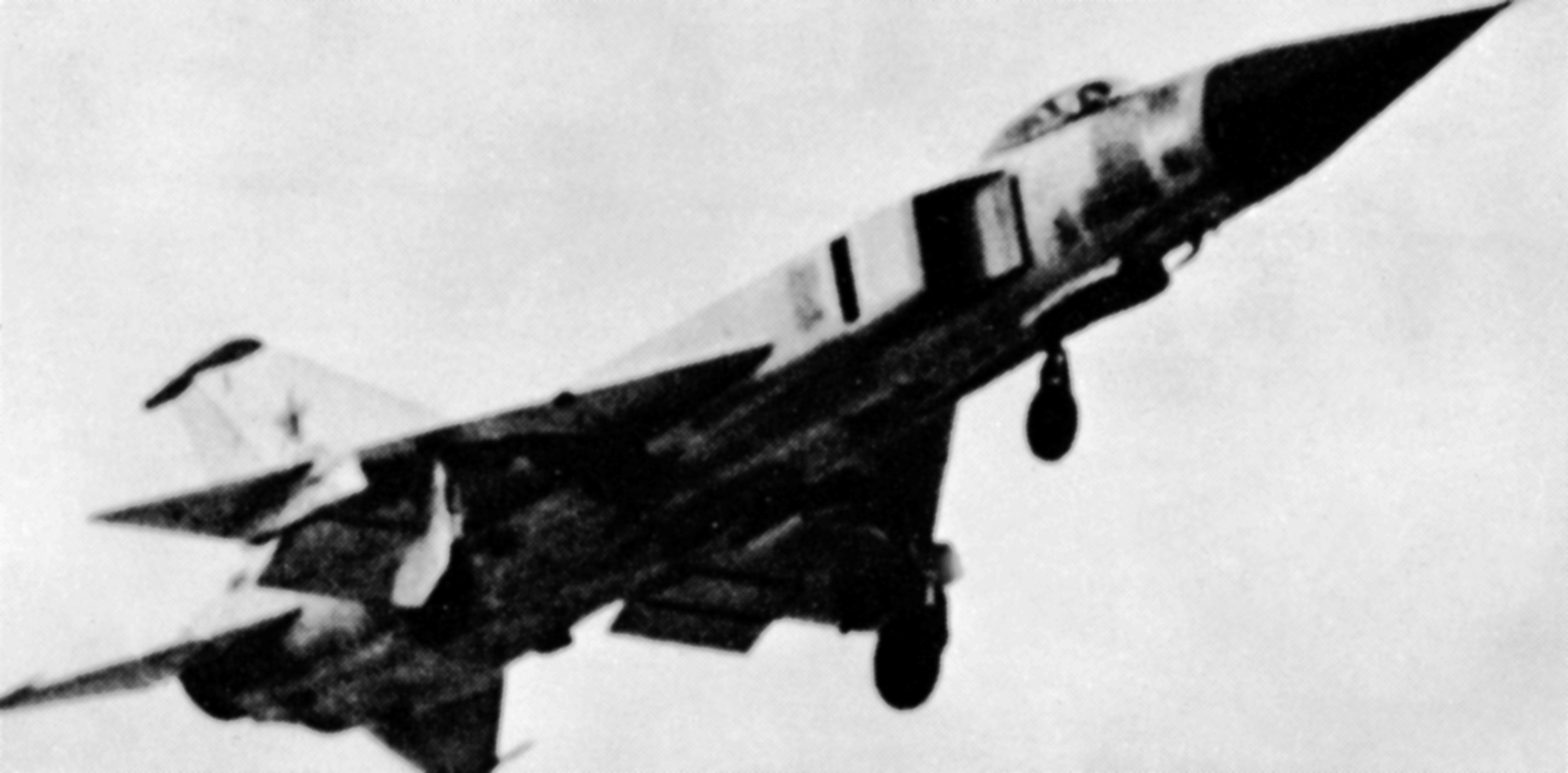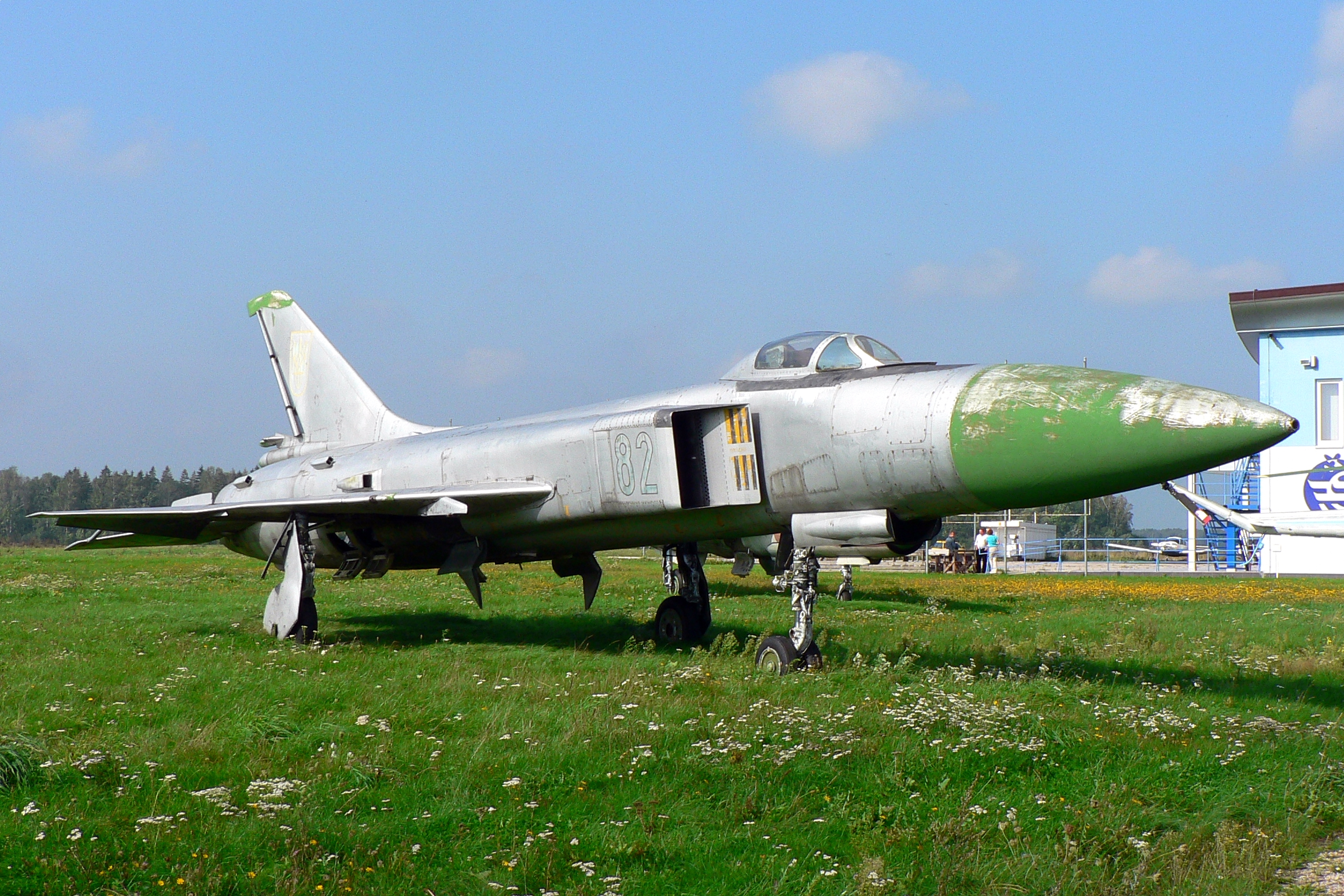|
Sukhoi S-6
The Sukhoi S-6 (Russian Cyrillic:Сухой С-6) was a design proposal for a two-seat tactical bomber which was developed in the Soviet Union. Roughly based on the Su-15U, further development eventually led to the Sukhoi T-6-1 and via the T-6-2 to the Sukhoi Su-24. Development In the mid-1960s, the Soviet aviation forces sought a successor to the obsolete Yak-28 and Ilyushin Il-28. Sukhoi's experimental design department was aware of the need to replace these legacy aircraft, but at the time the political leadership of the Soviet Union believed there was a greater need for intercontinental aircraft armed with ballistic and anti-aircraft missiles which could serve as interceptors. Thus, designs for new bombers or ground attack aircraft to replace the Yak-28 and Il-28 were not considered a priority. As a result, the chief engineer Yevgeny Felsner and Oleg S. Samoilovich worked on the S-6 mainly in their spare time. To obtain the necessary resources, the S-6 project was submitted ... [...More Info...] [...Related Items...] OR: [Wikipedia] [Google] [Baidu] |
Attack Aircraft
An attack aircraft, strike aircraft, or attack bomber is a tactical military aircraft that has a primary role of carrying out airstrikes with greater precision than bombers, and is prepared to encounter strong low-level air defenses while pressing the attack.Mortensen 1987, pp. 24–25. This class of aircraft is designed mostly for close air support and naval air-to-surface missions, overlapping the tactical bomber mission. Designs dedicated to non-naval roles are often known as ground-attack aircraft.Gunston 2009, p. 73. Fighter aircraft often carry out the attack role, although they would not be considered attack aircraft ''per se'', although fighter-bomber conversions of those same aircraft would be considered part of the class. Strike fighters, which have effectively replaced the fighter-bomber and light bomber concepts, also differ little from the broad concept of an attack aircraft. The dedicated attack aircraft as a separate class existed primarily during and after Wo ... [...More Info...] [...Related Items...] OR: [Wikipedia] [Google] [Baidu] |
Tumansky R-11F-300
The Tumansky R-11 (initially AM-11) was a Soviet Cold War-era turbojet engine. Design and development The Tumansky R-11 was developed by A.A. Mikulin, Sergei Tumansky, and B.S. Stechkin as a twin-spool axial-flow high-altitude non-afterburning turbojet for Yakovlev Yak-25RV reconnaissance aircraft. This engine was the first Soviet twin-spool turbojet. It was first run in early 1956Gunston 1989, p.167. and was later employed in some variants of the Yakovlev Yak-26 and Yakovlev Yak-27, as well as the Yak-28.Goebel, Greg"The Yakovlev Yak-25 & Yak-28."AirVectors. Retrieved: 17 July 2012. The R-11's basic design was very successful and it was later developed into the Tumansky R-13 and Tumansky R-25 along with the experimental Tumansky R-21. A total of 20,900 R-11 engines were built. Variants * R-11V-300 - first production version, high-altitude, non-afterburning * R-11F-300 (R-37F) - afterburning version, entered production in 1956, used on MiG-21F, P and U. * R-11AF-300 - imp ... [...More Info...] [...Related Items...] OR: [Wikipedia] [Google] [Baidu] |
Gryazev-Shipunov GSh-6-23
The Gryazev-Shipunov GSh-6-23 (russian: Грязев-Шипунов ГШ-6-23) (GRAU designation: 9A-620 for GSh-6-23, 9A-768 for GSh-6-23M modernized variant) is a six-barreled 23 mm rotary cannon used by some modern Soviet/Russian military aircraft. The GSh-6-23 differs from most American multi-barreled aircraft cannon in that it is gas-operated, rather than externally powered via an electric, hydraulic, or pneumatic system. The GSh-6-23 uses the 23×115 Russian AM-23 round, fed via linked cartridge belt or a linkless feed system. The linkless system, adopted after numerous problems and failures with the belt feed, is limited. Fire control is electrical, using a 27 V DC system. The cannon has 10 pyrotechnic cocking charges, similar to those used in European gas-operated revolver cannon such as the DEFA 554 or Mauser BK-27. The rapid rate of fire exhausts ammunition quickly: the Mikoyan MiG-31 aircraft, for example, with 260 rounds of ammunition (800 rounds maximum), w ... [...More Info...] [...Related Items...] OR: [Wikipedia] [Google] [Baidu] |
Sukhoi Su-7IG
The Sukhoi Su-7 ( NATO designation name: Fitter-A) is a swept wing, supersonic fighter aircraft developed by the Soviet Union in 1955. Originally, it was designed as a tactical, low-level dogfighter, but was not successful in this role. On the other hand, the soon-introduced Su-7B series became the main Soviet fighter-bomber and ground-attack aircraft of the 1960s. The Su-7 was rugged in its simplicity, but its Lyulka AL-7 engine had such high fuel consumption that it seriously limited the aircraft's payload, as even short-range missions required that at least two hardpoints be used to carry drop tanks rather than ordnance. Design and development Original Su-7 fighters On 14 May 1953, after Joseph Stalin's death, the Sukhoi OKB was reopened"Sukhoi Su-7." ''Sukhoi Company Museum.'' Retrieved: 28 January 2011 and by the summer, it b ... [...More Info...] [...Related Items...] OR: [Wikipedia] [Google] [Baidu] |
Sukhoi T-6-1
The Sukhoi Su-24 ( NATO reporting name: Fencer) is a supersonic, all-weather attack aircraft developed in the Soviet Union. The aircraft has a variable-sweep wing, twin-engines and a side-by-side seating arrangement for its crew of two. It was the first of the USSR's aircraft to carry an integrated digital navigation/attack system. It remains in service with the Russian Air Force, Syrian Air Force, Ukrainian Air Force, Algerian Air Force and various other air forces to which it was exported. Development Background One of the conditions for accepting the Sukhoi Su-7B into service in 1961 was the requirement for Sukhoi to develop an all-weather variant capable of precision air strikes. Preliminary investigations with ''S-28'' and ''S-32'' aircraft revealed that the basic Su-7 design was too small to contain all the avionics required for the mission. OKB-794 (later known as Leninets) was tasked with developing an advanced nav/attack system, codenamed ''Puma'', which would b ... [...More Info...] [...Related Items...] OR: [Wikipedia] [Google] [Baidu] |
Rybinsk RD-36-35
The Rybinsk RD-36-35 was a small lift turbojet engine, designed for use on V/STOL aircraft at the Rybinsk Engine Design Bureau (RKBM), designed by Pyotr A. Kolesov. Very little is known of this engine, probably due to confusion with the similarly designated Kolesov RD-36 and Lotarev D-36, which have little or no relation to the lift-jet. Variants and Applications ;RD-36-35 :* MiG-21PD :* Mikoyan-Gurevich 23-01 (Mikoyan Guryevich E-7PD) :* Sukhoi T-58VD ;RD-36-35PR :* Bartini Beriev VVA-14 ;RD-36-35F :* Bartini KOR-70 (Project for high speed VTOL ship-borne floatplane Kor.S)“ Wings of the Motherland” No. 9/2001 // Vyacheslav Zayarin, Konstantin Udalov “The Concept of the Universal Vertical :* Yakovlev Yak-36M :* Yakovlev Yak-38U ;RD-36-35FV:(''izdeliye'' 24) :* Yakovlev Yak-36M ;RD-36-35FVR :(''izdeliye'' 28) :* Yakovlev Yak-38 The Yakovlev Yak-38 (russian: Яковлев Як-38; NATO reporting name: "Forger") was the Soviet Naval Aviation's only operati ... [...More Info...] [...Related Items...] OR: [Wikipedia] [Google] [Baidu] |
Lavochkin La-250
The Lavochkin La-250 "Anakonda" was a high-altitude interceptor aircraft prototype developed in the Soviet Union by the Lavochkin design bureau in the 1950s. Its nickname "Anaconda" was invented during the flight test and referred to both the elongated body shape as well as the relatively critical flight characteristics of the machine. Development By the mid-1950s, it became obvious that subsonic cannon-armed fighters such as the Yakovlev Yak-25 would be unable to intercept fast high-altitude targets like the upcoming generation of strategic jet bombers. Consequently, in 1953 Lavochkin OKB proposed addition of an air-to-air missile system to the ''Berkut'' air-defense system. Tasked with defense of Moscow, the ''Berkut'' system consisted of a large network of radars and surface-to-air missile sites as well as ground-controlled interceptor aircraft. Lavochkin's proposed missile, the G-300 utilized a guidance system based on vacuum tubes and was so heavy (about 1,000 kg (2, ... [...More Info...] [...Related Items...] OR: [Wikipedia] [Google] [Baidu] |
RATOG
JATO (acronym for jet-assisted take-off) is a type of assisted take-off for helping overloaded aircraft into the air by providing additional thrust in the form of small rockets. The term ''JATO'' is used interchangeably with the (more specific) term RATO, for ''rocket-assisted take-off'' (or, in RAF parlance, RATOG, for ''rocket-assisted take-off gear''). Early experiments and World War II In 1927 the Soviet research and development laboratory Gas Dynamics Laboratory developed solid-propellant rockets to assist aircraft take-off and in 1931 the world's first successful use of rockets to assist take-off of aircraft were carried out on a U-1, the Soviet designation for a Avro 504 trainer, which achieved about one hundred successful assisted takeoffs. Successful assisted takeoffs were also achieved on the Tupolev TB-1. and Tupolev TB-3 Heavy Bombers. The official test of the Tupolev TB-1 in 1933 shortened the takeoff by 77% when using the rockets. Early experiments using rocket ... [...More Info...] [...Related Items...] OR: [Wikipedia] [Google] [Baidu] |
Tumansky R-21F-300
The Tumansky R-21 was a Soviet turbojet engine of the 1960s. Used for development only, the project was canceled. Design and development The Tumansky R-21 was developed at Tushino motor plant (part of OKB-300), headed by Nikolai Georgievich Metskhvarishvili, as a twin-spool axial-flow afterburning turbojet. It was based on the Tumansky R-11 with the goal of increasing thrust and airflow, using a new six-stage compressor with a larger diameter and different rotor blades than its predecessor as well as a new afterburner chamber and variable exhaust nozzle. The increased pressure ratio and turbine inlet temperature required components to be fabricated from advanced alloys. Several contemporary Soviet aircraft were planned to use the R-21, including the Sukhoi T-58, Sukhoi T-6 and the Mikoyan-Gurevich Ye-8. On September 11, 1962 an R-21, fitted to a Ye-8, exploded in mid-air after compressor failure; test pilot Georgy Mosolov survived the ejection at Mach 1.78, but he never fu ... [...More Info...] [...Related Items...] OR: [Wikipedia] [Google] [Baidu] |
Sukhoi
The JSC Sukhoi Company (russian: ПАО «Компания „Сухой“», ) is a Russian aircraft manufacturer (formerly Soviet), headquartered in Begovoy District, Northern Administrative Okrug, Moscow, that designs both civilian and military aircraft. It was founded in the Soviet Union by Pavel Sukhoi in 1939 as the Sukhoi Design Bureau (OKB-51, design office prefix Su). During February 2006, the Russian government merged Sukhoi with Mikoyan, Ilyushin, Irkut, Tupolev, and Yakovlev as a new company named United Aircraft Corporation.Russian Aircraft Industry Seeks Revival Through Merger ." ''. ... [...More Info...] [...Related Items...] OR: [Wikipedia] [Google] [Baidu] |
Sukhoi Su-15
The Sukhoi Su-15 (NATO reporting name: Flagon) is a twinjet supersonic interceptor aircraft developed by the Soviet Union. It entered service in 1965 and remained one of the front-line designs into the 1990s. The Su-15 was designed to replace the Sukhoi Su-11 and Sukhoi Su-9, which were becoming obsolete as NATO introduced newer and more capable strategic bombers. Development Recognizing the limitations of the earlier Su-9 and Su-11 in intercepting the new Boeing B-52 Stratofortress, particularly in terms of radar and aircraft performance, the Sukhoi OKB quickly began the development of a heavily revised and more capable aircraft. A variety of development aircraft evolved, including the Sukhoi T-49, which shared the fuselage of the Su-9 (including its single engine), but used cheek-mounted intakes to leave the nose clear for a large radome for the RP-22 Oryol-D ("Eagle") radar (NATO "Skip Spin"), and the T-5, essentially a heavily modified Su-11 with a widened rear fuselage con ... [...More Info...] [...Related Items...] OR: [Wikipedia] [Google] [Baidu] |
Sukhoi T-58
The Sukhoi Su-15 (NATO reporting name: Flagon) is a twinjet supersonic interceptor aircraft developed by the Soviet Union. It entered service in 1965 and remained one of the front-line designs into the 1990s. The Su-15 was designed to replace the Sukhoi Su-11 and Sukhoi Su-9, which were becoming obsolete as NATO introduced newer and more capable strategic bombers. Development Recognizing the limitations of the earlier Su-9 and Su-11 in intercepting the new Boeing B-52 Stratofortress, particularly in terms of radar and aircraft performance, the Sukhoi OKB quickly began the development of a heavily revised and more capable aircraft. A variety of development aircraft evolved, including the Sukhoi T-49, which shared the fuselage of the Su-9 (including its single engine), but used cheek-mounted intakes to leave the nose clear for a large radome for the RP-22 Oryol-D ("Eagle") radar (NATO "Skip Spin"), and the T-5, essentially a heavily modified Su-11 with a widened rear fuselage cont ... [...More Info...] [...Related Items...] OR: [Wikipedia] [Google] [Baidu] |

.jpg)



.png)

